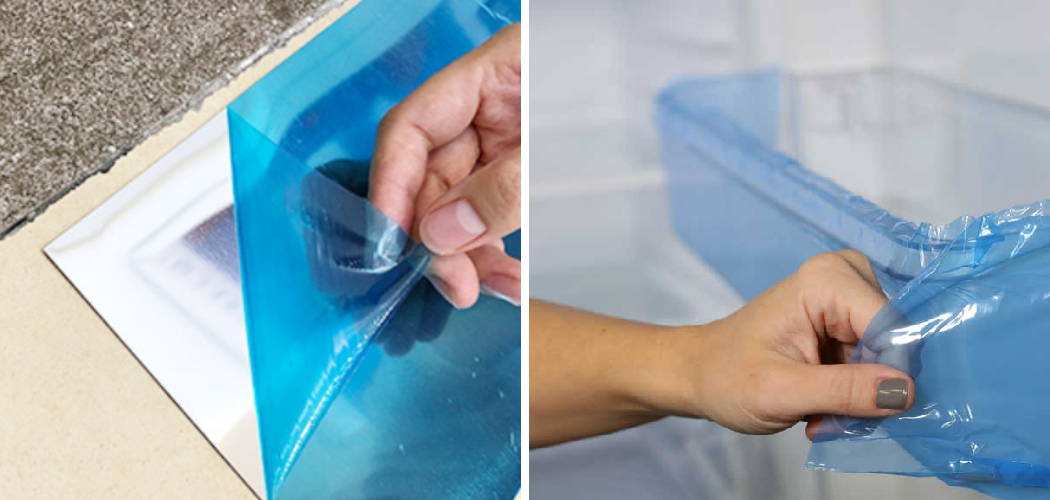Removing the protective film from a stainless steel refrigerator can be a surprisingly delicate task, despite the ruggedness of the appliance.
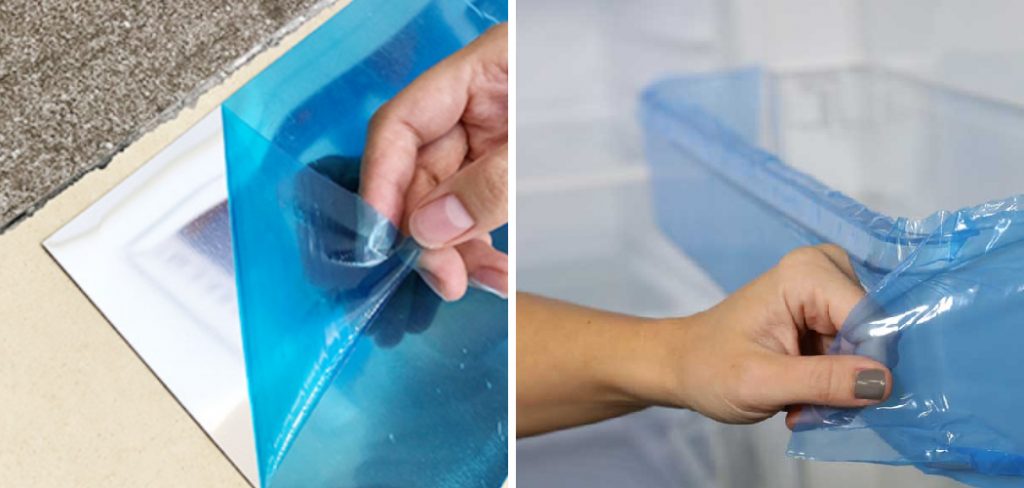
The film, designed to protect the surface during manufacturing and shipping, can leave behind sticky residue or be difficult to peel off if not approached correctly.
This guide aims to simplify the process of how to remove protective film from stainless steel refrigerator, ensuring your refrigerator remains pristine and free from scratches or damage.
Whether you’re dealing with a new fridge straight out of the box or an appliance that’s been in place for a while but still has its film, understanding the right techniques and tools is crucial. We’ll cover everything from gentle peeling methods to using household items to tackle stubborn adhesive.
By following these steps, you can ensure a smooth and spotless stainless steel finish, enhancing both the appearance and longevity of your refrigerator. Let’s dive into the effective methods to remove that protective film safely and efficiently.
Importance of Removing Protective Film Properly
Properly removing the protective film from your stainless steel refrigerator is crucial for several reasons. First and foremost, improperly removing the film can lead to scratches or damage to the surface of the refrigerator, which can be costly and difficult to repair.
Additionally, any leftover adhesive residue can attract dirt and grime, making your refrigerator look unsightly and requiring additional cleaning. Ensuring that the film is removed carefully also prevents any potential chemical reactions between the adhesive and the stainless steel, which could tarnish or discolor the surface.
Furthermore, a thoroughly cleaned stainless steel surface enhances the aesthetic appeal of your kitchen, reflecting its modern and sleek design. Lastly, removing the protective film appropriately helps in maintaining the manufacturer’s warranty, as any damage caused by incorrect removal methods might void the coverage. For these reasons, it is essential to approach this task with the right techniques and a gentle hand.
Characteristics of Stainless Steel
Stainless steel stands out as a preferred material in appliances and kitchenware owing to its distinctive characteristics. One of its notable features is its exceptional resistance to rust and corrosion. This is primarily due to the presence of chromium, which forms a passive layer of chromium oxide on the surface, preventing oxidation and decay even in moist environments.
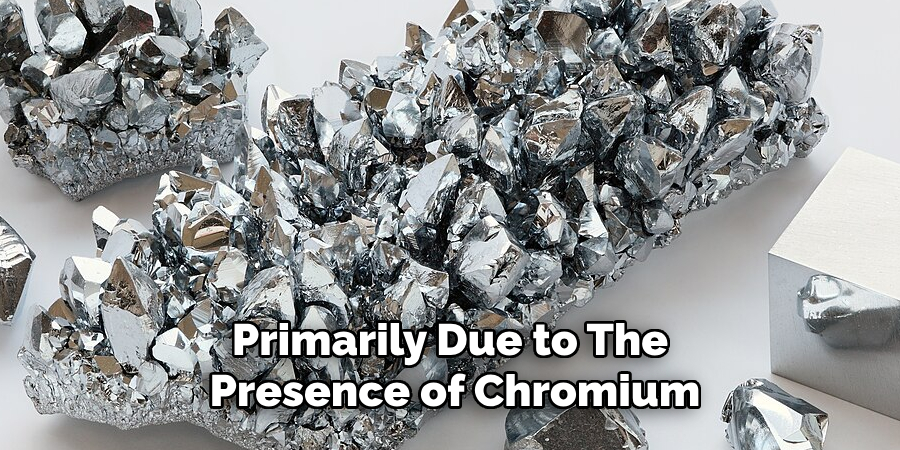
Stainless steel is also highly durable; it can endure significant wear and tear without losing its integrity or appearance. Additionally, it’s non-porous, which means it does not easily harbor bacteria or other pathogens, making it a hygienic option for kitchen appliances.
The alloy’s ability to maintain a gleaming, polished look with relatively low maintenance is another significant advantage. Simple cleaning with mild, non-abrasive cleaners and a soft cloth is typically sufficient to preserve its shine and avoid any damage.
Beyond its functional properties, stainless steel is prized for its modern and sleek aesthetic, seamlessly fitting into various kitchen designs and décor styles.
Its neutral metallic finish complements both contemporary and traditional settings, contributing to its widespread popularity. Furthermore, stainless steel is highly recyclable, which makes it an environmentally friendly choice, adding to its overall value. These characteristics collectively make stainless steel an enduring favorite in household appliances.
Types of Protective Films Used
Protective films for stainless steel refrigerators come in various types, each designed to cater to specific needs and preferences. The most common type is the polyethylene (PE) film, which is known for its flexibility and ease of application.
PE films are usually transparent or slightly tinted, providing a barrier against scratches and minor impacts without obscuring the appearance of the stainless steel surface.
Another popular option is the polyvinyl chloride (PVC) film. PVC films are more rigid than PE films and offer enhanced durability, making them suitable for environments where the appliance may be more prone to physical damage.
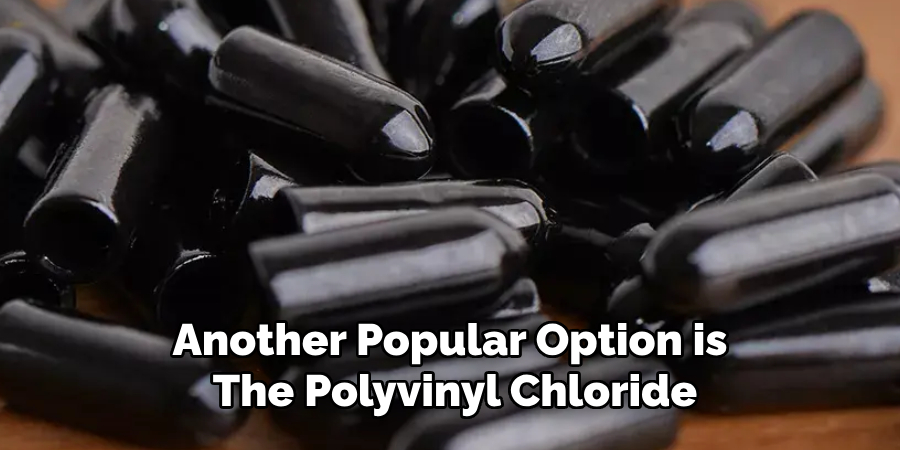
These films are also effective in protecting against chemicals and solvents that may come into contact with the refrigerator during installation or use.
Lastly, there are polypropylene (PP) films, which are less commonly used but offer a unique set of advantages.
PP films have a higher melting point and are more resistant to heat, making them ideal for appliances located in warmer climates or near heat sources such as ovens. They also boast excellent chemical resistance and mechanical properties, ensuring long-lasting protection.
Challenges Posed by Protective Film on Stainless Steel
While protective films offer essential benefits in safeguarding stainless steel surfaces, they also present certain challenges that users need to be aware of. One primary issue is the difficulty in removing the film without causing damage to the underlying stainless steel.
If the film has been adhered for an extended period, or if it has been exposed to heat, the adhesive can become particularly stubborn, making it harder to peel off cleanly. This often results in the need for special solvents or tools, which can inadvertently scratch or mar the surface if not used correctly.
Another challenge is the risk of adhesive residue remaining on the stainless steel after the film is removed. This sticky layer can attract dust, dirt, and grime, compromising the aesthetic appeal of the appliance and necessitating additional cleaning efforts.
Moreover, some adhesives can leave a residue that is difficult to remove or may chemically react with the stainless steel, leading to discoloration or tarnishing over time.
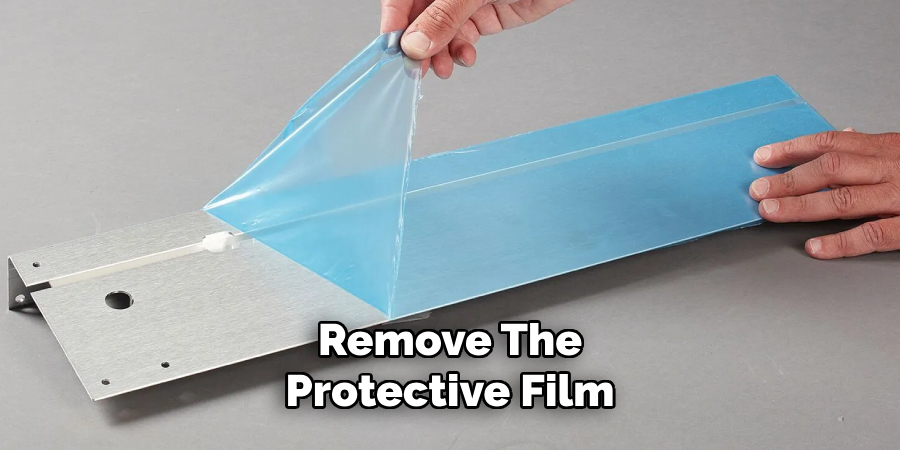
There’s also the potential inconvenience of having to remove the protective film immediately upon installation to avoid these issues. Many users may delay this task, underestimating the difficulties it could pose later on.
Additionally, in cases where the film starts to peel unintentionally or bubbles form beneath it, the overall appearance of the refrigerator can be negatively affected, detracting from the sleek look that stainless steel is known for.
Preparing for Protective Film Removal
To ensure a smooth and damage-free removal of the protective film from stainless steel refrigerators, preparation is key. The first step is to gather all necessary tools and materials.
This typically includes a soft microfiber cloth, a plastic scraper or credit card, mild adhesive remover or vinegar, and warm soapy water. Having these items on hand before starting the process can help streamline the task and reduce the likelihood of causing accidental scratches or damage.
Next, it’s essential to clean the surface of the refrigerator thoroughly. Use warm soapy water and a soft cloth to wipe down the area, removing any dust, dirt, or grime that might interfere with the film removal process. Ensuring that the surface is clean and dry will make it easier to peel off the film without leaving residue behind.
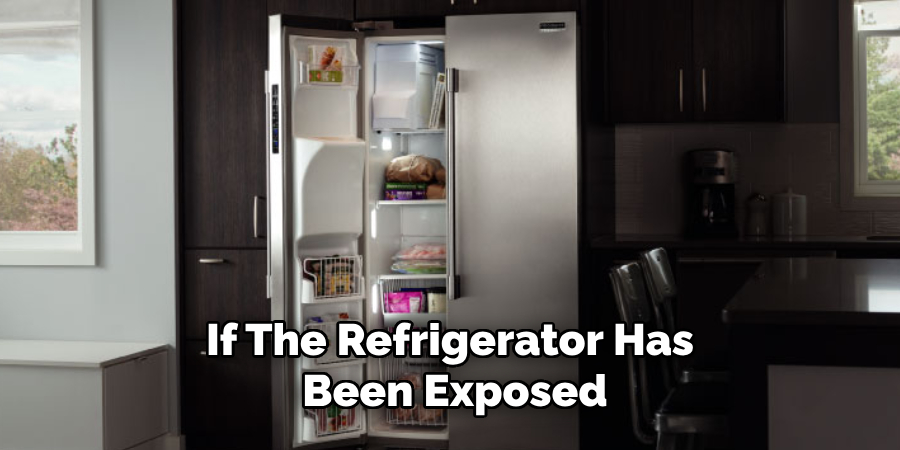
If the refrigerator has been exposed to cold temperatures, allowing it to warm up to room temperature can be beneficial. This is because the adhesive on protective films tends to be more pliable and easier to work with at warmer temperatures. In some cases, gently applying heat with a hairdryer set on a low setting can help to soften the adhesive, making the film easier to remove.
10 Methods How to Remove Protective Film from Stainless Steel Refrigerator
1. Using Warm Water and a Soft Cloth
One of the simplest methods to remove protective film from a stainless steel refrigerator is by using warm water and a soft cloth. This method is particularly effective if the film has not been on the appliance for too long. Start by soaking a soft cloth in warm water.
Ensure the water is not too hot to avoid damaging the stainless steel surface. Gently rub the cloth over the area with the protective film, applying light to moderate pressure.
The warmth of the water will help to loosen the adhesive backing of the film, making it easier to peel off. If the film does not come off easily, you can repeat the process a few times. This method is gentle on the stainless steel and prevents scratches or other damage.
2. Applying a Hairdryer for Heat
Applying heat is a highly effective way to loosen the adhesive of the protective film. Using a hairdryer set on a low to medium heat setting, gently blow warm air over the edges of the protective film.
Hold the hairdryer about six inches away from the surface to avoid overheating. The heat will soften the adhesive, making it easier to peel the film away from the refrigerator. Start at one corner of the film and gently peel it back, continuing to apply heat as you pull.
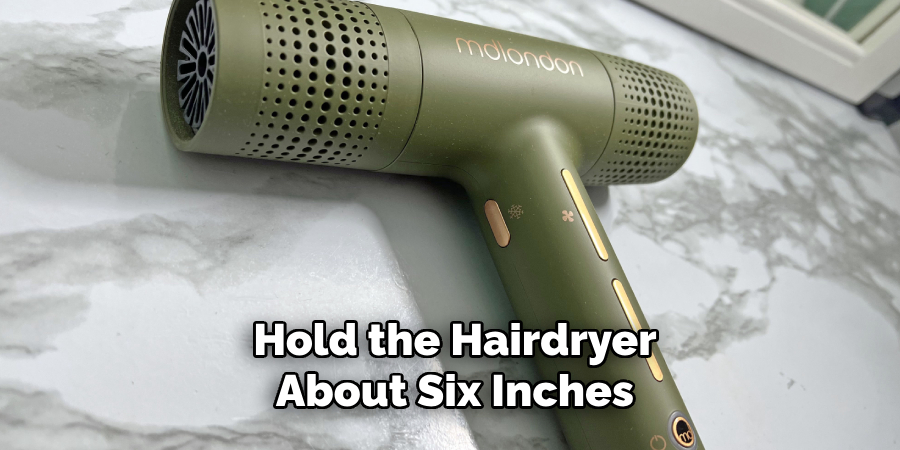
Be patient and avoid using excessive force to prevent scratching the stainless steel surface. This method works well for film that has been on the appliance for a longer period, as it helps to break down the adhesive bond.
3. Using a Plastic Scraper or Credit Card
For stubborn protective film that resists simple peeling, using a plastic scraper or a credit card can be an effective solution. Avoid using metal tools, as they can scratch the stainless steel. Begin by carefully lifting one corner of the film with your fingernail. Once a small section is lifted, slide the edge of the plastic scraper or credit card under the film.
Gently push and lift to separate the film from the surface. Use smooth, controlled motions to prevent scratching. If the film is particularly stubborn, you can combine this method with the application of heat from a hairdryer to soften the adhesive further, making it easier to remove the film without causing damage.
4. Employing Commercial Adhesive Removers
Commercial adhesive removers are designed specifically to dissolve adhesive substances and can be very effective for removing protective film from stainless steel refrigerators.
Products like Goo Gone or WD-40 Specialist Adhesive Remover are readily available and easy to use. Before applying, ensure the room is well-ventilated. Spray a small amount of the adhesive remover onto a cloth or directly onto the protective film, depending on the product instructions.
Allow it to sit for a few minutes to penetrate the adhesive. Gently peel the film away, applying more adhesive remover as needed. After removing the film, clean the area with warm soapy water to remove any residue from the adhesive remover, ensuring a clean and shiny finish.
5. Utilizing Vinegar and Baking Soda
A natural and environmentally friendly method involves using a mixture of vinegar and baking soda. This combination creates a mild abrasive that can help to lift the protective film without damaging the stainless steel surface. Start by mixing equal parts vinegar and water in a spray bottle.
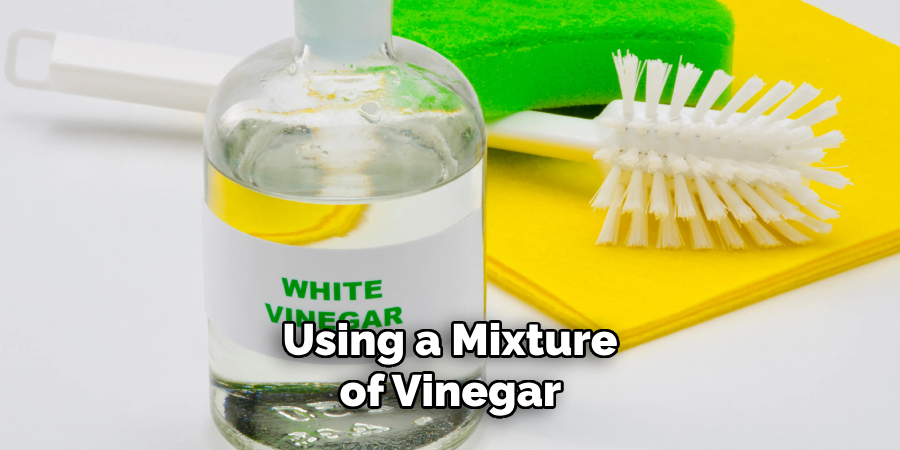
Spray the solution generously over the film. Then, sprinkle baking soda onto a damp cloth and gently rub it over the area.
The reaction between the vinegar and baking soda will help to break down the adhesive. After a few minutes, try peeling back the film. If it resists, apply more solution and continue rubbing with the baking soda until the film comes off. Rinse the surface with clean water and dry it with a soft cloth to prevent streaks.
6. Using Rubbing Alcohol
Rubbing alcohol is another effective method for removing protective film, especially when dealing with tough adhesives.
Soak a cotton ball or a soft cloth in rubbing alcohol and apply it to the edges of the protective film. Allow the alcohol to sit for a few minutes to penetrate and weaken the adhesive. Gently peel back the film, applying more alcohol as needed to keep the adhesive soft.
This method works well because rubbing alcohol evaporates quickly, leaving no residue behind. After the film is removed, wipe down the surface with a clean, damp cloth to remove any remaining alcohol and ensure a streak-free shine on the stainless steel.
7. Trying Vegetable Oil
Vegetable oil can be surprisingly effective in removing protective film from stainless steel surfaces. The oil works by softening the adhesive, making it easier to peel off the film. Apply a small amount of vegetable oil to a soft cloth and rub it over the protective film, focusing on the edges. Allow the oil to sit for a few minutes to penetrate the adhesive.

Gently peel back the film, adding more oil as needed. This method is gentle and non-toxic, making it a good choice for those who prefer to avoid chemical-based adhesive removers. After removing the film, clean the area with warm soapy water to remove any oily residue and dry with a soft cloth.
8. Using a Steam Cleaner
A steam cleaner can be a highly effective tool for removing protective film from stainless steel refrigerators.
The high temperature of the steam helps to loosen the adhesive, making it easier to peel off the film. Begin by filling the steam cleaner with water and allowing it to heat up according to the manufacturer’s instructions. Hold the steam cleaner nozzle a few inches away from the protective film and apply steam in a sweeping motion over the surface.
The heat and moisture will soften the adhesive. Gently peel back the film while continuing to apply steam as needed. This method is efficient and avoids the use of chemicals, providing a thorough clean without damaging the stainless steel.
9. Applying Ice for Cold Treatment
While applying heat is a common method, using ice for a cold treatment can also be effective, particularly for adhesives that react to temperature changes. Place a few ice cubes in a plastic bag and hold it against the protective film for several minutes. The cold temperature will cause the adhesive to harden and become brittle, making it easier to peel off the film.
Once the adhesive is sufficiently hardened, use a plastic scraper or your fingernail to lift one corner of the film and peel it back. If necessary, reapply the ice to keep the adhesive brittle until the entire film is removed. This method is gentle and avoids the use of heat, which can be beneficial for certain types of adhesives.
10. Combining Methods for Stubborn Film
For particularly stubborn protective film, combining several methods can be the most effective approach. Start by applying heat with a hairdryer to soften the adhesive, then use a plastic scraper to lift the edges of the film.
Follow up by applying a commercial adhesive remover or rubbing alcohol to dissolve any remaining adhesive. If the film still resists, try using a mixture of vinegar and baking soda to further break down the adhesive bond.
By combining these methods, you can tackle even the most difficult protective films without damaging the stainless steel surface. Always finish by cleaning the area with warm soapy water and drying with a soft cloth to ensure a clean and polished finish.
Conclusion
Removing protective film from stainless steel refrigerators can be challenging, but with the right approach, it is entirely manageable.
Whether you prefer commercial adhesive removers, natural solutions like vinegar and baking soda, or physical methods such as applying heat or cold, various strategies can effectively address different types of adhesives.
Combining these methods can tackle even the most stubborn films. Thanks for reading, and we hope this has given you some inspiration on how to remove protective film from stainless steel refrigerator!

